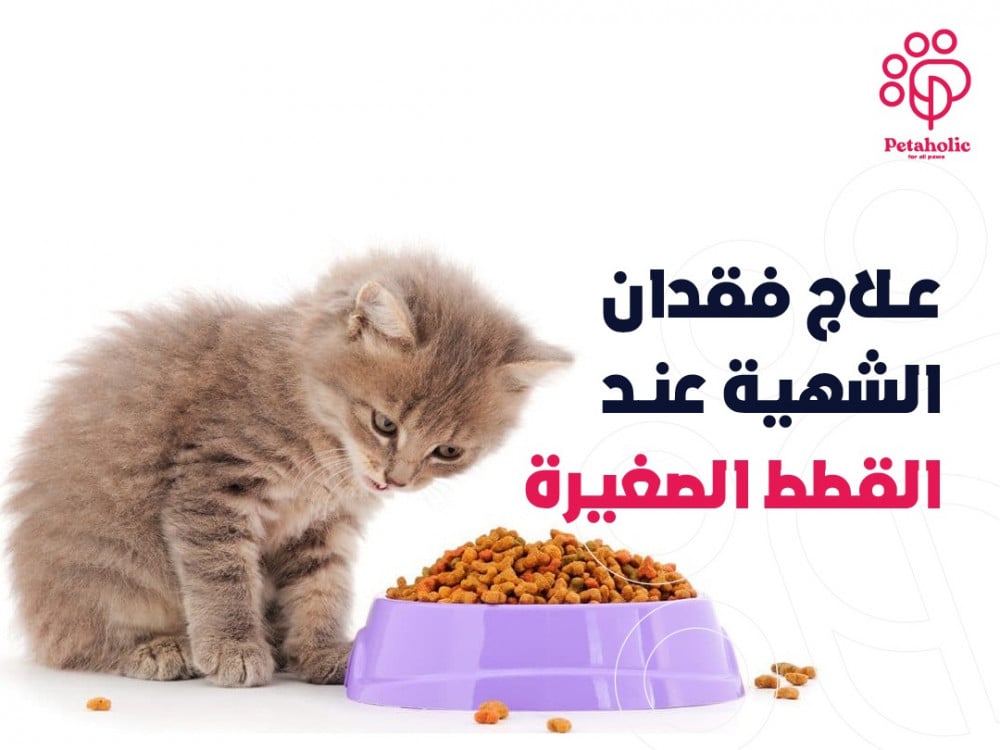
Many people need to know how to treat anorexia in young cats, especially as it is one of the problems facing a large number of those who raise these pets.
Especially since often a cat that suddenly decides to stop eating is a sign of a more serious problem. It's not usually because the cat doesn't want a certain food anymore. If your cat isn't eating and skips several meals, or goes a few days without food, you need to take action. There may be things you can do at home to help your cat regain her appetite, which you will know in the following lines, in addition to treating anorexia in kittens and its causes.
What is the treatment for anorexia in young cats and how does the veterinarian deal with it?
Your vet will want to start treatment right away; Because the longer the anorexia lasts, the faster your cat's health will deteriorate. Often, treatment will begin while the vet is still determining exactly what is causing the loss of appetite. There are a number of different ways to treat this condition.
Medicine
Depending on the diagnosis, your vet will prescribe the appropriate medication to treat any ailments your cat may be suffering from. For example, antibiotics may be given for bacterial infections, while medications are prescribed to treat parasites when they are detected. Any existing pain should also be controlled with analgesics. There are also medications available that stimulate your cat's appetite while dealing with some of the other symptoms, such as nausea.
Fluid therapy is one of the most popular examples of treating anorexia in kittens
Either through an IV or through an injection under the skin, your vet will administer fluids to your cat so that she continues to receive the water she needs.
feeding tube
This method of feeding helps avoid food passing through your cat's mouth, and can be especially helpful if dental disease is the cause of the loss of appetite. Liquefied or softened food can be sent directly to the cat's digestive system. It is also a useful method for psychological problems with food, as the cat will not be able to associate any negative feelings with the presence of food in her mouth, and instead will start eating on her own again. However, a feeding tube is only considered if other treatment options fail.
To help you monitor your cat's food intake and make sure she eats all of her food, we provide:
How do you deal with your cat with anorexia at home?
If your cat stops eating its normal food, check to see if there is a need for another specific food that your cat likes. Sometimes a cat may feel that something is wrong with her food and refuse to eat it. Depending on why your cat stopped eating, you may be able to get her to start eating again. However, it is not normal for a cat to stop eating if her food has not changed. Here are some common ways to treat anorexia in kittens at home:
- In the event that a respiratory illness and your cat's congestion and inability to smell food is the cause of her loss of appetite, your vet may order a home remedy to ease the problem by clearing the cat's nasal passages. This includes a steam bath to inhale water vapor, or putting a few saline drops in your nostrils to widen them. All of this helps your cat breathe easily in order to smell her food again.
- Adjust your cat's food and diet routine to help her return to her usual appetite and eating again. You can try heating cold, wet food kept in the fridge for a few seconds to make it warm.
- Offer your cat canned tuna or chicken, as there is no cat in the world who does not like these foods, especially kittens, to help her regain her appetite.
- Change the flavor or texture of the food you serve. If it's wet food, try dry food, and vice versa.
- Make your own cat food using fresh ingredients.
- Make sure the food bowl is wide, shallow, and made of ceramic or glass if possible, as plastic can retain odors rather than eliminate them from their food.
- Clean the cat's dish thoroughly with soap and water. Because smells can lead them away from their food. So be sure to wash the bowl after every meal.
- Change the cat's bowl to a less distracting location, as noise can distract cats and cause them to avoid their food.
Examples of products that we offer at Petaholic and help your cat regain her appetite include:
What do you do when your cat recovers from anorexia?
It is important that you continue to monitor your cat because her appetite is increasing at a steady rate. Undereating can lead to dehydration and abnormal levels of salt and sugar, so watch out for signs of these problems. Your cat may also benefit from electrolyte supplements or water, which your vet will be able to recommend. If she has been prescribed medication, always follow your vet's instructions to prevent the disease from coming back.
If changes in the home are the reason your cat is not eating, you should also talk to your vet about how best to manage the situation. As in the case of bringing in a new pet or even having a new baby. Be sure to follow up with your vet to ensure that your kitten's eating habits are returning to normal, and if there are any indications that the loss of appetite is returning, take your cat for another checkup as soon as possible.
Among our wide range of cat supplies, we recommend this product to help your cat recover from anorexia:
The most important thing you can do is talk to your vet as soon as possible and follow his advice on providing food for your cat. By following the advice in this guide, you can ensure that this disease does not return again. In order to ensure that we, at Petaholic, have provided a group of the best foods that help your cat to follow a healthy diet without losing her appetite, but rather enjoying her food.
Also read:
How many times do cats eat a day?.. Here is the answer in detail
To you now.. the cause of anorexia in dogs

